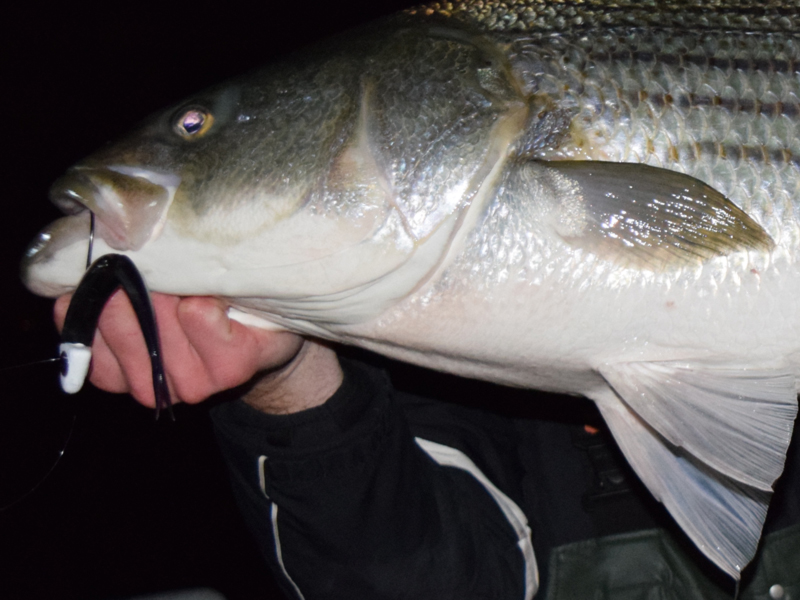It’s true that during the late fall and winter, night fishing can be extremely difficult and uncomfortable. It’s also true that it can produce catches of rather epic proportions. You say you’re willing to brave subfreezing temperatures to get a rockfish on the end of the line? Okay, hard-core — this plan of attack will give you a tactical advantage.

- Don’t put a lot of effort into the first hour after the sun has set. There’s an adjustment period between dusk and full dark, and stripers often go more or less inactive for a while right after dark. It’s an hour or two after the sun has set that they usually kick back into gear (tide and conditions come into play here too, of course).
- When you get where you’re going, start out by trying dark colors. Although it may seem counterintuitive, dark colors often work best in low and very low light conditions because they block out what little light is available and create a silhouette that can be seen from below. In the darkness of night, black and dark purple are top choices.
- In the inky darkness, rattles help. If you’re going to use hard baits pick ones with lots of balls bouncing around in the rattle chambers and if you’re using soft baits, consider adding one of the small (and inexpensive) shove-in rattle chambers.
- If you’re in an area where there’s artificial lighting (commonly around bridges), focus on the edge of the light-line where the artificial light peters out into complete darkness. You’ll see bait in the lights and some predators as well, but the big fish tend to hunt where the light and darkness mix.
- If you see fish on the meter but don’t get many strikes, either stick around or mark the area and come back later. For whatever reason, rockfish do seem to be either “on” or “off” even more during the night than they are during daytime.